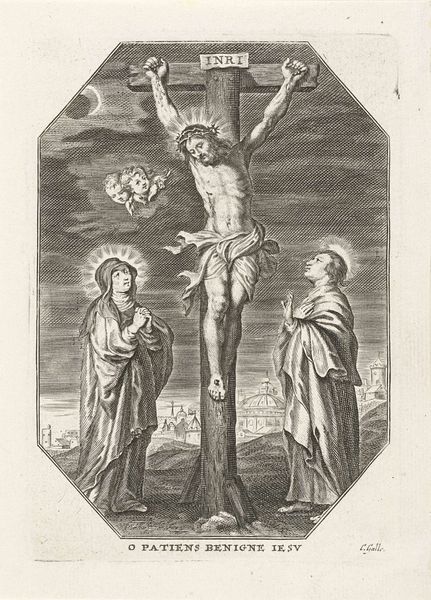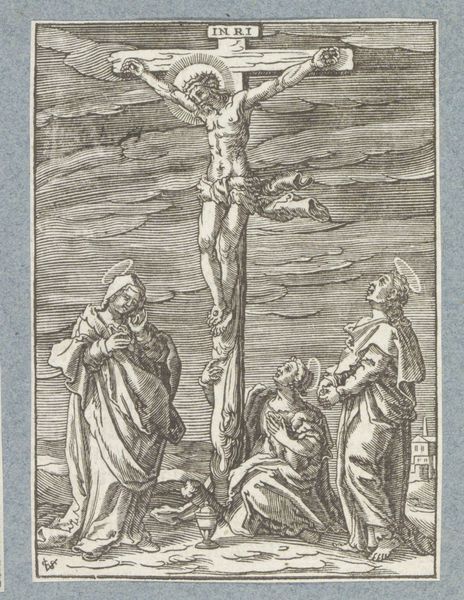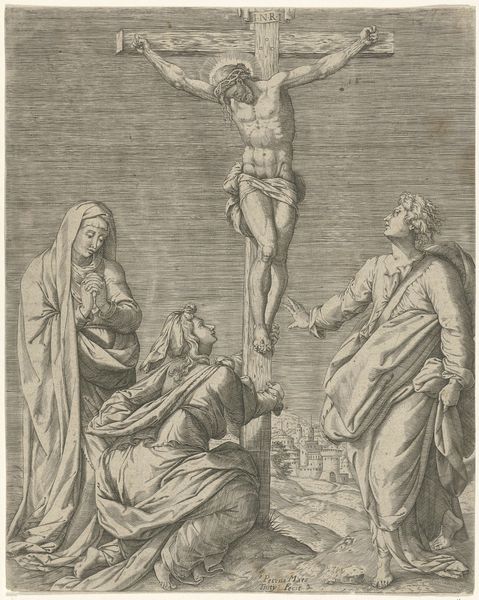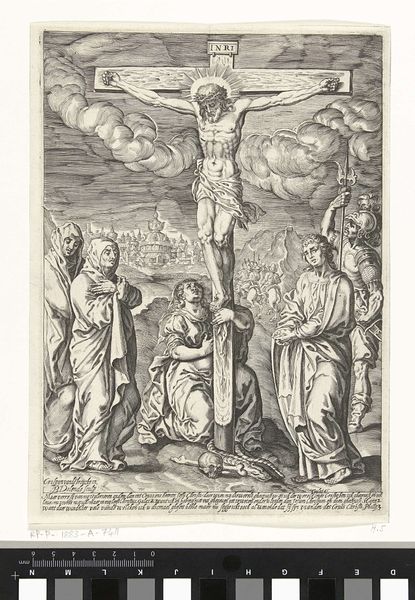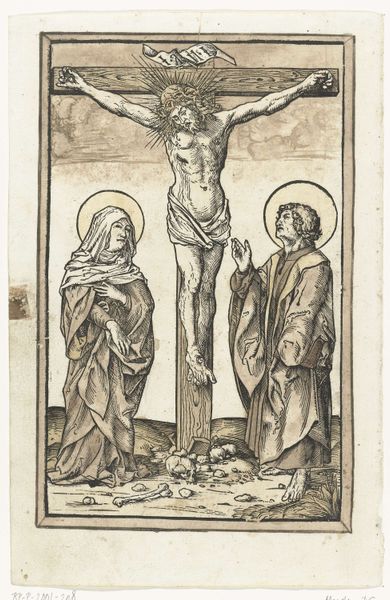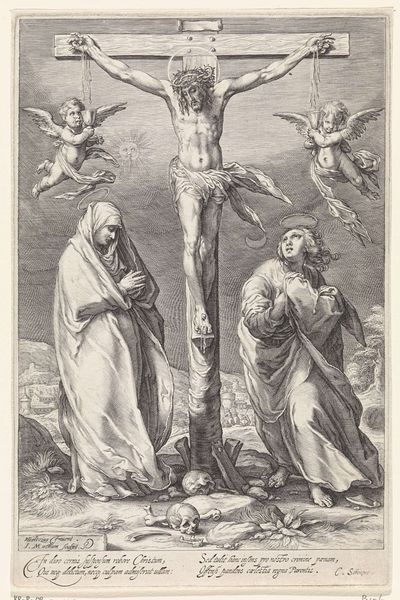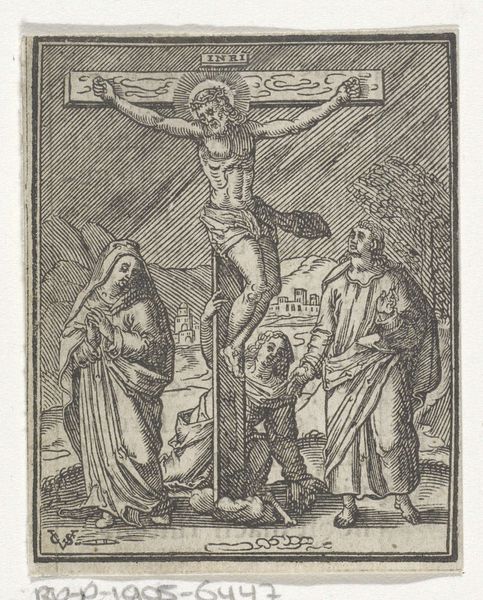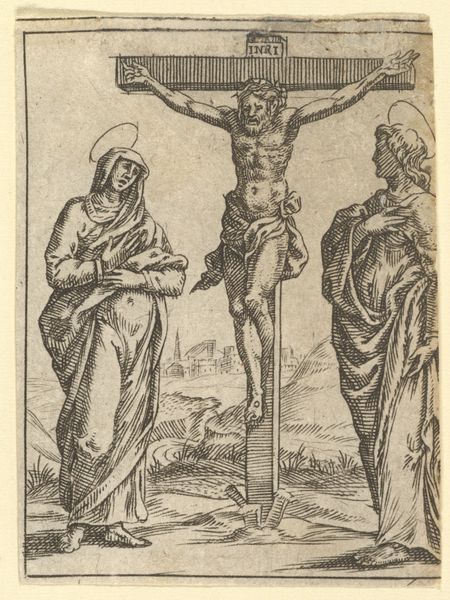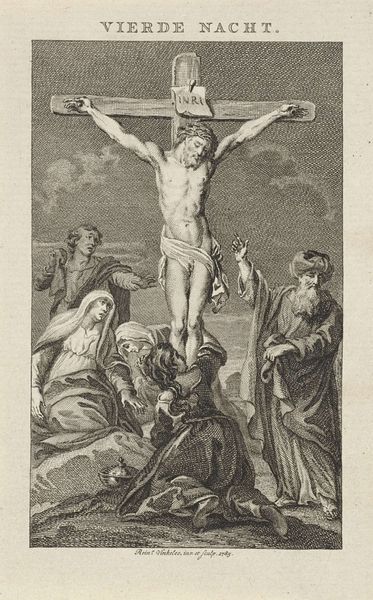
drawing, print, engraving
#
drawing
#
baroque
# print
#
figuration
#
cross
#
men
#
crucifixion
#
history-painting
#
engraving
#
christ
Dimensions: Sheet: 3 7/16 × 2 5/16 in. (8.7 × 5.9 cm)
Copyright: Public Domain
Editor: So, this print is titled "Christ on the Cross," dating somewhere between 1578 and 1625. It's anonymous, housed here at the Met. The stark black and white really draws you in. There's Christ, of course, but also these other figures and a skull at the base of the cross. What symbols jump out at you in this piece? Curator: Well, the skull at the base is an important start. In the language of imagery, we can see that this isn't just a generic death scene. That skull, often identified as Adam's, places Christ's sacrifice as a redemptive act, almost directly repairing the "original sin." It is visual cultural memory, presenting the viewer with an instant connection to both Old and New Testaments. Editor: That's fascinating. I hadn't thought about it that way. What about the figures on either side? They both have halos, and one seems to be looking directly at us. Curator: Indeed. That direct gaze establishes an immediate connection with the viewer, drawing us into the emotional space of the crucifixion. But beyond the grief of these individuals - often identified as Mary and John the Evangelist - consider how the halos signify their spiritual roles. Each element – skull, figures, gazes - coalesces to trigger deep-seated cultural and emotional responses. Do you notice any compositional techniques contributing to this emotional impact? Editor: I think so. Christ is placed so high, and the light around him brings all of the focus up there, highlighting him above all else. Below, the grief is almost tangible, making me think about the impact of his loss. Curator: Precisely. That use of space emphasizes the divine sacrifice, almost pressing down on the figures to amplify their mourning, influencing the reading of every symbol in the piece. Editor: I hadn’t noticed how much the composition affects the emotion. Thanks! This has really changed how I look at religious art. Curator: And hopefully, that will influence how you approach all imagery from now on. Every element is placed with purpose.
Comments
No comments
Be the first to comment and join the conversation on the ultimate creative platform.

